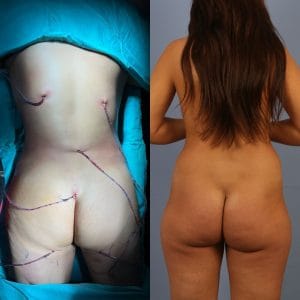A (surgical) drain is a tube made of clear silicone or plastic, with a diameter of 3-10 millimeters and a scaling container at its end, used to discharge the blood and other fluid built up in the related area after surgery.
Here are the main reasons we use drains after plastic surgery:
Preventing fluid accumulation: Post-operation, human body often produces excess fluid as part of the healing process. Drains can move this fluid out, which reduces the risk of complications.
Minimizing the possibility of an infection: Excess fluid build up in the body can create an environment for bacteria to multiply and increase the risk of infection. Drains reduce such risk by discharging the fluid away.
Encouraging the healing of stitches: By removing fluid, drains can help the surgical area to heal properly, reducing the chance of delayed healing or wound dehiscence.
Reducing irritation and swelling: Accumulated fluid can cause discomfort, pain and/or swelling at the area of operation. Drains can alleviate these symptoms by lowering pressure on the surrounding tissues.
Monitoring benefit: Drains allow healthcare professionals to keep track of the quantity and quality of the fluid coming from the surgical site. This kind of an information can provide valuable insight into the patient’s recovery and can help to detect possible complications at an early stage.
Following your doctor’s instructions on drain maintenance and removal after plastic surgery is important to ensure proper healing and minimize the risk of possible complications.

Drainless Surgeries
Drain-free surgeries stand out as a technique used in plastic surgery. This aims to minimize possible fluid accumulation by optimizing technique of tissue intervention and surgery instead of using surgical drain tubes during the operation.
Some of the benefits of drainless operations are listed below:
Minimal fluid pooling: Drainless surgeries minimize fluid build-up through careful optimization of tissue manoeuvring and surgical techniques. This aims to prevent fluid accumulation at the surgical site without the need for drain tubes.
Quick recovery: Drainless surgeries can speed up the recovery process due to the absence of drain tubes. The absence of drain tubes allows patients to move more comfortably in the post-operative period and return to their daily activities sooner.
Reduced risk of complications: Drainless surgeries can reduce the risk of complications during drain tube removal.
Important!
Drainless surgeries may offer some advantages over traditional plastic surgery techniques involving the use of drain tubes. However, since every patient and every surgical situation varies, it is crucial for the surgeon to decide which technique to use, considering the patient’s indiviual condition and needs.



